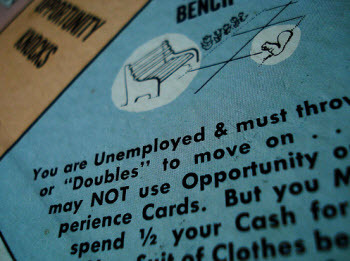If The Economy Added 290,000 New Jobs, Why Did The Unemployment Rate Go Up?
You might have noticed a few headlines this morning about the good jobs news — 290,000 new jobs were added in March — coupled with the rather grim realization that the unemployment rate climbed to 9.9%. What’s up with that?
The apparent discrepancy comes from the way the unemployment rate is calculated. The Bureau of Labor Statistics counts only active job seekers — and the government says that 195,000 of the new jobs were filled by people who had simply given up looking for jobs during the recession.
So, the good news is that people who had given up are getting jobs, and the bad news is that a lot of people have given up.
Here’s how the BLS defines “unemployed”:
Persons are classified as unemployed if they do not have a job, have actively looked for work in the prior 4 weeks, and are currently available for work. Actively looking for work may consist of any of the following activities:
* Contacting:
o An employer directly or having a job interview
o A public or private employment agency
o Friends or relatives
o A school or university employment center
* Sending out resumes or filling out applications
* Placing or answering advertisements
* Checking union or professional registers
* Some other means of active job searchPassive methods of job search do not have the potential to result in a job offer and therefore do not qualify as active job search methods. Examples of passive methods include attending a job training program or course, or merely reading about job openings that are posted in newspapers or on the Internet.
How the Government Measures Unemployment [BLS]
U.S. Adds 290,000 Jobs in April; Rate Rises to 9.9% [NYT]
Want more consumer news? Visit our parent organization, Consumer Reports, for the latest on scams, recalls, and other consumer issues.


